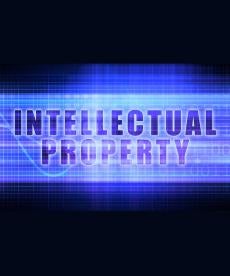Software patent owners that have been underwater holding their breath since the Supreme Court’s Alice Corp. v. CLS Bank decision can finally come up for air. In DDR Holdings, LLC v. Hotels.com, et al. (13-1505.Opinion.12-3-2014.1), the Federal Circuit finally found a software patent it could love in spite of the Alice decision. The DDR Holdings patent involved methods of serving web pages offering commercial opportunities by an “outsource provider.” The claimed invention provided for more than one unrelated web stores to offer a single product while allowing an “outsource provider” to provide a standard web page format for the product. In particular, the invention allowed product merchandisers to control the “look and feel” of their products even when offered for sale on unrelated merchant sites.
Representative claim 13 of the ’572 patent recites:
13. An e-commerce outsourcing system comprising:
a) a data store including a look and feel description associated with a host web page having a link correlated with a commerce object; and
b) a computer processor coupled to the data store and in communication through the Internet with the host web page and programmed, upon receiving an indication that the link has been activated by a visitor computer in Internet communication with the host web page, to serve a composite web page to the visitor computer wit[h] a look and feel based on the look and feel description in the data store and with content based on the commerce object associated wit[h] the link.
The Federal Circuit noted that the claims did “not merely recite the performance of some business practice known from the pre- Internet world along with the requirement to perform it on the Internet. Instead, the claimed solution is necessarily rooted in computer technology in order to overcome a problem specifically arising in the realm of computer networks.” Id. (emphasis added). The Federal Circuit reasoned the Alicedid not preclude protection because there were no abstract ideas implemented by the invention, and furthermore that the claims recited a combination of specific, what could be termed “technical” steps.
The claims recently held 101 ineligible in Ultramercial, finding that unlike the claims in Ultramercial, the claims at issue do “not merely the routine or conventional use of the Internet.” Id. at 22-23.
There are a couple things worth noting about the DDR invention, and this decision:
-
The point of novelty of this invention is a technical architecture and operation that, while perhaps fulfilling a non-technical business objective of providing the same look and feel across multiple different web sites, is not an abstract “business idea” like an advertising or accounting scheme.
-
The invention recites a fairly complex (and novel) technical arrangement, in which:
-
A “data store” contains “look and feel” information;
-
A “processor” is “programmed” and interacts with the data store to serve a composite web page through the Internet to a “visitor computer” using the look and feel information and “content” based on a “commerce object.”
-
As I have alluded to in earlier posts, after all is said and done, we now have a “technical” test for software inventions – if the advance over the art is technical in nature, it is likely inside Section 101. If the advance over the art is non-technical it will not be statutory even if it is wrapped inside a technical shell. Instead of using the word “abstract idea” in the Alice test, at least as far as software is concerned, just substitute “non-technical idea”, and you will get the same result. The trick is, however, that the vessel implementing the idea doesn’t count in making this determination. Here is an example of what I mean. Let’s say the claimed “invention” is a computer programmed to play a novel musical score, or a robot programmed to dance a novel dance move.
In either example, let’s assume for the sake of argument the music and score are novel and non-obvious. Would we expect these “inventions” to be patentable? I would say history tells us no, as I am not aware of any patents issued on inventions where the point of novelty is a musical idea. So, in this case, even though the computer “vessel” is most definitely a machine, what is new is actually a work of authorship that we would all agree is not patentable. In this way we can see that merely reciting a computer in a claim does not mean that “machine” should, as a matter of policy, be automatically statutory. Accordingly, if we accept that not all computers programmed to behave in a novel manner are 101 statutory, and that not all novel ideas are patentable just because they are machine-implemented (for example neither music nor choreography), we can open ourselves to the possibility that certain other types of innovation, like non-technical ideas, even though computer implemented, are not necessarily patent eligible. For example, the Federal Circuit appears to have viewed the invention as a whole in Ultramercial v. Hulu (November 2014), as a non-technical, content monetization concept as opposed to a technical innovation inside the perimeter of the useful arts. Of course, it is possible for innovation to encompass both non-technical and technical ideas simultaneously, some would argue that Ultramercial was such a case,tipping it inside 101.
Another point of confusion in Alice and its progeny is the mixing of obviousness requirements into Section 101. I would submit that the Court did not really conflate these two requirements. What the Court was really doing can be understood with reference to my example given above. Let’s assume again that the the “invention as a whole” is a musical score, and that this score is claimed as a computer programmed to “play” the score using a straight forward technical approach with nothing new about it. Here, the hypothetical tells us that the way the computer is programmed is not novel in and of itself, only the music is novel. But normally this is not a given, requiring an inquiry into whether there is a technical contribution of some kind. It is not so much an inquiry as to the obviousness of the technical contribution as it is whether or not the asserted innovation lies in the technical domain as opposed to a non-technical domain. If the technical component appears to be a routine implementation of the non-technical component of the innovation, then the conclusion is that the invention as a whole contains no patent eligible subject matter. Clearly this can get confusing to sort out, and particularly where the applicant or patentee would prefer to conflate any non-technical innovation with the technical implementation.
In essence, what the Court did in Alice was say that once the abstract idea was stripped out, the technical component remaining was routine engineering bereft of any inventive content. Unfortunately, the patentee may beg to differ on that point in most cases.



 />i
/>i

